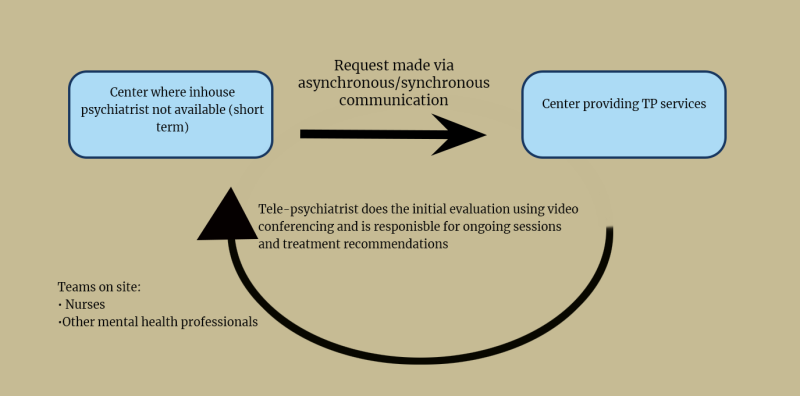As telemedicine expanded and hospitals adopted at least one of its protocols, the need to develop improved communications technology became important.
The Bell System was the first of many engineering companies to promise an ultimate two-way communications system by 1970. In 1959, Nebraska Psychiatric Institution (NPI) started using the first two-way television to transmit demonstrations and other data forms to medical students after a 12-year trial with the tech. Data packet transfer included motion picture images with accompanying sound. In 1961, a grant-supported trial examining the potential of two-way television in psychiatric treatment started. In addition to assessing the potential of telemedicine in mental healthcare, this trial also tested the reliability of the new technology in telepsychiatry. The trial provided valuable insights, and in 1964, the National Institute of Mental Health sponsored the installation of a two-way closed-circuit television system between NPI and the Norfolk State Memorial Hospital. At a distance of 112 miles away, the new technology was charged with transmitting data packs on in-service training opportunities and providing teleconsultation services remotely.
Since the first use case in the 1960s, two-way interactive technologies have become a huge part of telemedicine. Today, the modifications available to this technology make it possible to exchange medical information remotely over a secured network in real-time.
Closed-circuit televisions enable healthcare professionals to establish a patient-care provider connection with patients or underserved patient groups in remote locations.
Data packs are shared as texts, high-resolution images, and quality sound useful for gauging patient’s response, physical examination (teledermatology), adherence monitoring (telepharmacy), and patient monitoring (telepsychiatry).
Biomedical telemetry, in senior care, measures a patient’s vital signs and transmits the same using standard medical biometric sensors. Geriatric specialists on the receiving end, using a two-way interactive television, may better assess a patient’s health using real-time images, audio responses, and biometric signals transmitted through the closed-circuit television.
The quality and format of images transmitted using a two-way interactive television may depend largely on the type of healthcare delivery it is used for. For instance, with the exemption of teledermatology (dermatology telemedicine services), the black-and-white, high-resolution view is considered preferable for diagnostics purposes. Other critical factors such as lightning effect, depth illusion, and magnification are also important when using a two-way interactive television. In essence, this technology has significantly expanded the frontiers of telemedicine by adding the personal touch considered absent in non-visual telemedicine. Patients can relate better with their care providers as audio-visual tech of the two-way television better mimic the conventional in-person hospital appointment.
Recently, the possibilities of a three-dimensional (3D) visualization fusing AI-aided technology with the audio-visual tech of two-way television have received wide publicity. This new proposal seeks to improve the data packs sent using two-way televisions. 3D visualizations provide a real-time, true-form high-definition image of the internal organs. This is particularly useful in tumor care, teledermatology, and maternal care.
At the Radiological Society of North America’s Scientific Assembly Meeting in 2009, telecommunication giants, Siemens and NVIDIA, demonstrated a new 3D ultrasonic imaging technology that can be hooked to a two-way interactive television. This new technology provided incredible insight into the internal organs in different magnification and resolution. There are also possibilities of deploying this technology for maternal healthcare, especially in fetal imaging. 3D imaging in telemedicine opens a new era of medical imaging, helping healthcare stakeholders improve the reach of modern medicine.





